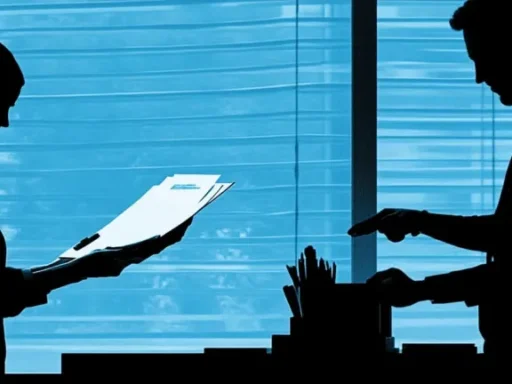A deed that has not been properly accomplished can cause a lot of trouble with a property that turned out to be a nightmare. However, you can still remain calm. There’s a way to cure the problem. This writing will walk you through the steps of how to cure a defective deed, leaving you with only positive vibes.
Often when it comes to legal stuff, people are intimidated, more so when there are errors in the documents. But don’t look at it as the end of the world. The right mindset coupled with the required knowledge can easily help you solve this problem. So, we step down and take the path of finding out how, if at all, you can reach out to a defective deed issue and thus ensure your property rights.
Defining A Defective Deed
A defective deed comes with hidden dangers for the parties interested in the transaction. Exploring these points one would get a clear understanding of such issues and the nature of such the defective deed types.
Nature Of Defects In The Deeds
The phrase “defective” used when we talk about the deed is a powerful signal that some explanations or documents demonstrate property turning over inaccuracies. They consistencies can vary, from a missing name, or misspelling, to the most serious kinds, i.e., entirety or a part of the deed that is non-existent on paper, i.e., fraud or a forge especially a transfer. For instance, a deed wherein the grantee’s name is absent or misspelt. Such defects are likely to result in the process of transfer being blocked, thus the deed being either ineffective or null and void.
Types of Flawed Deeds
Defective Deeds come as a result of varied mistakes in the manner in which they were created.
Three general classifications are as follows:
- Error in Execution: This one particularly is the kind of case when the deed doesn’t follow the legal formalities that it should have, like no signature from the party confirming the lack of a witness during the signing, and so on.
- Material Defect: This is the type of error related to greater mistakes, for example, the legal descriptions of the properties are incorrect, the names of the grantees are missing, or the grantor’s representation is invalid. This one is more serious than the other types of mistakes.
- Breach of Warranty: This type is based on the fact that the property seller or ‘grantor’ does not want to or cannot give the legal assurances to the buyer, set out in the warranty deed. If there is a lien that is not known to the buyer, then it can serve as an example of a case when the warranty is breached.
This categorization helps to have a proper understanding of the defect and at the same time to take the initial steps towards finding the right cure for a defective deed.
The Concept of Curing a Defective Deed
From the earlier description of defective deeds, this section deals with the idea of “curing” these mistakes and presents the step-by-step manner of making a defective deed a legally correct document.
What is Meant by “Curing”
As regards to the property deeds, “curing” refers to the act of repairing the document. In fact, it’s a process performed not only eliminating the errors that might bring about are the existing document, but also making quick retrieval possible. Thus giving the day an overall
improvement. So that the document can flow efficiently and effectively from the inheriting to the new owner’s hands and vice versa, and the entire record is updated without delay.
In other words, “curing” (borrowing a page from the medical field) is the action of healing the sickness present in the documents. This process is all about diagnosing and resolving the defects or the incorrect information.
A method of gaining proprietary rights is curing of a defective deed. The most concrete example would be the correction of the wrong spelling of the name(s) in the document, amending the erroneous property descriptions, or solving problems through the disclosure of the hidden easements. It is even a proactive and definitely more important process in the legal realm of property transactions.
By carrying out a curing process, parties to a property transaction are ensured that their titles and interests will be adequately protected. They will not get into conflicts anymore as this process is performed before not after the sales or acquisition of real property
How to Rectify a Defective Deed
A defective deed can be rectified following a predefined approach by law. The process of rectification is divided into several stages. Firstly, let’s consider the issue identifying, it always goes first.
Characterizing a problem is the beginning of the process to cure a defective deed. One has to be very attentive during the stage of review so that a problem of any kind might not be overseen, especially if it is written. At some point, the major task after being sure of the situation is its categorization, i.e. finding out if it’s an insignificant matter or a rather big defect.
The next step is finding the cause of the problem. This entails establishing the magnitude of the defect in terms of the extent of the surrounding circumstances and thereby being able to evaluate the effect the defect has on the rights of ownership or other property rights. After that, the actions needed for correcting the defect are carried out, therefore, it is possible to modify the deed, write a new but the corrected deed or even make use of a judicial intervention if the defect is big enough.
Another instance is, a minor spelling mistake can easily be rectified by sending a correction deed, while the presence of undisclosed easements would require legal action. To avoid any kind of misunderstanding or to prevent non-compliance not only must each of the steps be accurate but also with the norms of law. Therefore, it’s always recommended to have a good lawyer in these cases by one’s side. Eventually, a clear and legally valid document is the ultimate target to be attained.
Strategies for Remedy of a Defective Deed
Handling defective deed rectification is a tricky and complicated process that includes defect identification, lawyer appointment, and title search. Give us a detailed description of these steps.
Defect Prompt Detection
A first and important step to the restoration of the defective deed is to clarify the mistakes. Defects such as no signatures, incorrect legal descriptions, name orders, etc. are those errors. For example, a ‘quitclaim deed’ would cause a problem if a grantor had not signed it. Therefore, the identification procedure consists of careful verification of the deed’s contents in order to verify that there are no salient inaccuracies omitted or undocumented.
Seeking Legal Aid
When the constraints in the property deed are already identified, the next step is to obtain advice from a reputable attorney. Real estate lawyers are skilled in property law and are capable of providing the necessary elicitations in repairing a defective deed. If, for instance, the last deed had a wrong number of the lot, they would tell whether a ‘corrective deed’ must be made. They make sure that the applied solutions protect the grantor’s and the grantee’s rights.
Search for the Title
The implementation of a title search that is all-inclusive has as its principal function the protection of the property from claims and liens which have not been paid but which might still be looming out there. For instance, one will unveil that a liened contractor had already placed the property on lien which would notify the respective parties of the problem that needs to be tackled first. In this case, carrying out the title search is a proactive measure which will secure the validity of the deed in the law.
Legal Remedies to Cure a Defective Deed
Legal remedies are the means by which defects in a deed are corrected, thus providing sustenance to the property rights. In (un)Law, we are discussing the tools used to reform, correct, or, potentially, discard a deed that was erroneous, due to varied reasons. The methods are Reformation of the deed, Execution of a Corrective Deed, and Quitclaim Deeds.
Reformation of the Deed
Deed reformation goes with a series of legal processes that are employed in guiding the document from improperly executed status to correctly drawn status and then registered at the registry. It simply refers to the correction of erroneous details in the deed by a court or an agreement of the parties involved. It is really helpful during a situation where both parties agree to a change in the property line that happens to be a mistake. An application for a court order may be one of the available options to be used to reach an agreement or disagree on reforming the deed in the court of law. The reformation process is full of vagaries based on an acquisition of the original intention.
Execution of a Corrective Deed
Executing a correcting deed is quite often the most appropriate way of rectifying minor mistakes. This change of a deed usually comes with errors like wrong spelling of names, wrong dates, or unsigned. However, it is not just a matter of writing a new deed; it must be signed by both parties after the change and details have been corrected. One key thing to note is that while it plays a role in correcting errors, a correction deed does not change the real property rights of the owner. The notarization as well is reexecuted to ascertain its validity.
Quitclaim Deeds: A Potential Solution
quitclaim deeds are rarely utilized for granting and errors besides the latter that are done without any rights from the grantor, in order to avoid this instance, we can use a quitclaim deed when the right is not completely exhausted.
Considerations When Curing a Defective Deed
Solving and correcting errors or mistakes in legal documents is not an easy task that requires various aspects of the law to be known and taken seriously. Key issues to remember are timing and the actual filing procedures involved along with the associated risks and uncertainties.
Timing and Filing
It’s very important to act fast and make things right with your PROPERTY DEED, as your problem may snowball and become a real headache if you procrastinate. The very first step of correcting the deed is to file the prepared document with the county or state records office. People should also know the filing requirements and deadlines for the case to be handled correctly. Normally, it is difficult for people to keep in mind the deadlines and this should trigger people to have excellent record-keeping skills. For example, the California filing deadlines may not be similar to those in New York. In addition, take a detailed note of every communication and filing.
Potential Risks and Complications
A property owner should completely rectify the defectiveness of a deed and at the same time, he/she has to be ready to face challenges and threats. Examples of these challenges include disputes arising from the use of the property and other matters that the grantor might not have anticipated to occur around his/her property.
property ownership to conflicts with lien holders or creditors. Incorrectly addressed, a ‘cured’ deed could still be a legal time bomb ready to explode. For example, even when a quitclaim deed is used, the presence of a legal claim could persist and, in the end, this might lead to a legal dispute in the future.
Another significant risk is to complicate the defect even further by trying to resolve it without the necessary legal knowledge. In such cases, the necessity of a real estate lawyer is not just favorable but also inevitable to make the remedy not to make the existing defect worse. Basically, the recognition of these potential hazards and glitches provide a person with the tools that they need as they launch their quest of curing a faulty deed more cautiously. Each move has to take into account these intricacies for the effective guaranteeing of property rights.
Case Studies of Cured Defective Deeds
Continuing from a previous part where strategies were talked about, we now proceed to view specific instances exemplifying successful efforts in the process of straightening out imperfections in deeds.
- Mistaken Property Boundaries: A homeowner in Texas was living on the wrong land, thereby the property was also recorded in the deed as under a different owner. The title search conducted during a possible sale revealed the disparities. Finally, legal professionals prepared and filled a suitable corrective deed, neighbors signed and a survey confirmed their signatures, mistake was corrected, defect was annihilated. N
- Forgotten Lien: In Illinois, a forgotten mortgage lien appeared as a sudden stopper to the property sale process when the title search did not reveal it but the state that is like any other state has its statutes of limitation. The matter was settled by an experienced solicitor who went and got the necessary information on the case, that is, a formal release of the lien from the mortgage lender and the latter recorded it with the county’s recorder of deeds office.
There was a mistake in legal description that a family living in Florida noticed only after they had purchased a house. Erroneous evidence of metes and bounds led to the wrong size of property representation. A real estate attorney made changes in the deed to depict the property size accurately, and the deficiency was eliminated during the recording.
Consider each case a great success story in the matter of applying legal actions to cure defective deeds in the right way.
Conclusion
Correcting the deed that contains a flaw is not an easy job. It is a tough process that demands legal knowledge and exactness. Whether it is an error in execution, a material defect, or a breach of warranty, each issue requires a different method. Getting the help of legal experts in property law, i.e., real estate attorneys and obtaining title searches could be the first guides in the correct way. Reformation, corrective deeds, and quitclaim deeds, as legal remedies, make filling the validity of a deed significant. Deed studies from Texas, Illinois, and Florida have revealed that depending on the right legal support and proper corrective actions, it is feasible to rectify defects successfully. Note that the correction of a defective deed is not only the remedy for the error but also the protection of property rights and the maintenance of a fair and smooth transaction.
Discover the Power of BlueNotary:
Integrate your Business, Title Company, or Law Firm to Satisfy your Customers and Decrease Turnaround
Get a document Notarized/Sign-up
Join the Free Notary Training Facebook Group
Frequently Asked Questions
What are defective deeds in property transactions?
Defective deeds refer to the presence of errors in property transactions, lying between the limits of warranties violation and defects in the execution of the instrument or tangible defects. These can be very negative factors in court cases if no prompt action is made to tackle them.
Why is it important to recognize mistakes in a defective deed?
Recognizing mistakes in a defective deed removes obstacles from the path of property deals. On the contrary, letting defects remain unsolved can result in legal proceedings being blocked, money being lost, and disputes in property ownership or limits.
Which tactics would you recommend for modifying and correcting defective deeds?
One of the methods used to talk about deleting bad words is typically seeking legal advice from a very knowledgeable real estate lawyer and researching the titles very well. By following these methods, you can easily find any problems concerning the deed and then solve it nicely and directly.
What types of legal remedies could be leveraged to safeguard the validity of a deed?
Remedies to guarantee the validity of the instrument may include the changing of the deed, correction of the mistake, and administrative quitclaim. These approaches are the most successful in eliminating or clarifying errors that have arisen in the business transaction.
How good are legal aids and attorneys in the settlement of cases arising out of faulty deeds?
For example, popular states like Texas, Illinois, and Florida are the places where legal aids and attorneys have played significant roles in resolving issues to do with mistakes in property boundaries, forgotten liens, and wrong legal descriptions via the use of corrective deeds, lien releases, and deed modifications.
Their specialization definitely comes into play, as they can carefully carry out the most suitable legal solutions to mend defective deeds.








